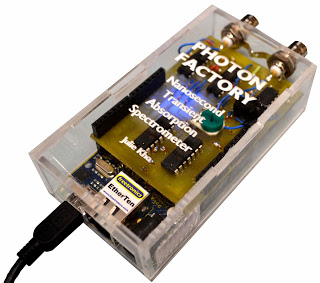
At the Photon Factory (a laser lab at the University of Auckland) author have just completed a summer studentship building the electronics for a nanosecond transient absorption spectrometer. This spectrometer will be able to excite molecules and then detect the excited state. Another laser will work out for how long the excited states are stable. This will be used to help research of photoactive molecules, made of nano particles that can convert sunlight into energy.

At the Photon Factory, author have an ultrafast transient absorption spectrometer that can send pulses femto-seconds (1*10^-15 seconds) across to excite and probe very fast chemical reactions. This system is limited to the femto-to-pico time scales due to the delay being set by making one laser pulse travel a slightly further distance than the other. To probe molecules that have excited states in the nanosecond to millisecond range a new laser system was built that could delay the pulses electronically. Delay generators can be purchased for thousands of dollars, however an in-house Arduino-based delay generator was constructed and computer-controlled using Arduino in order to set the delay.
Author : NZ Nano http://nznano.blogspot.kr/



COMMENTS